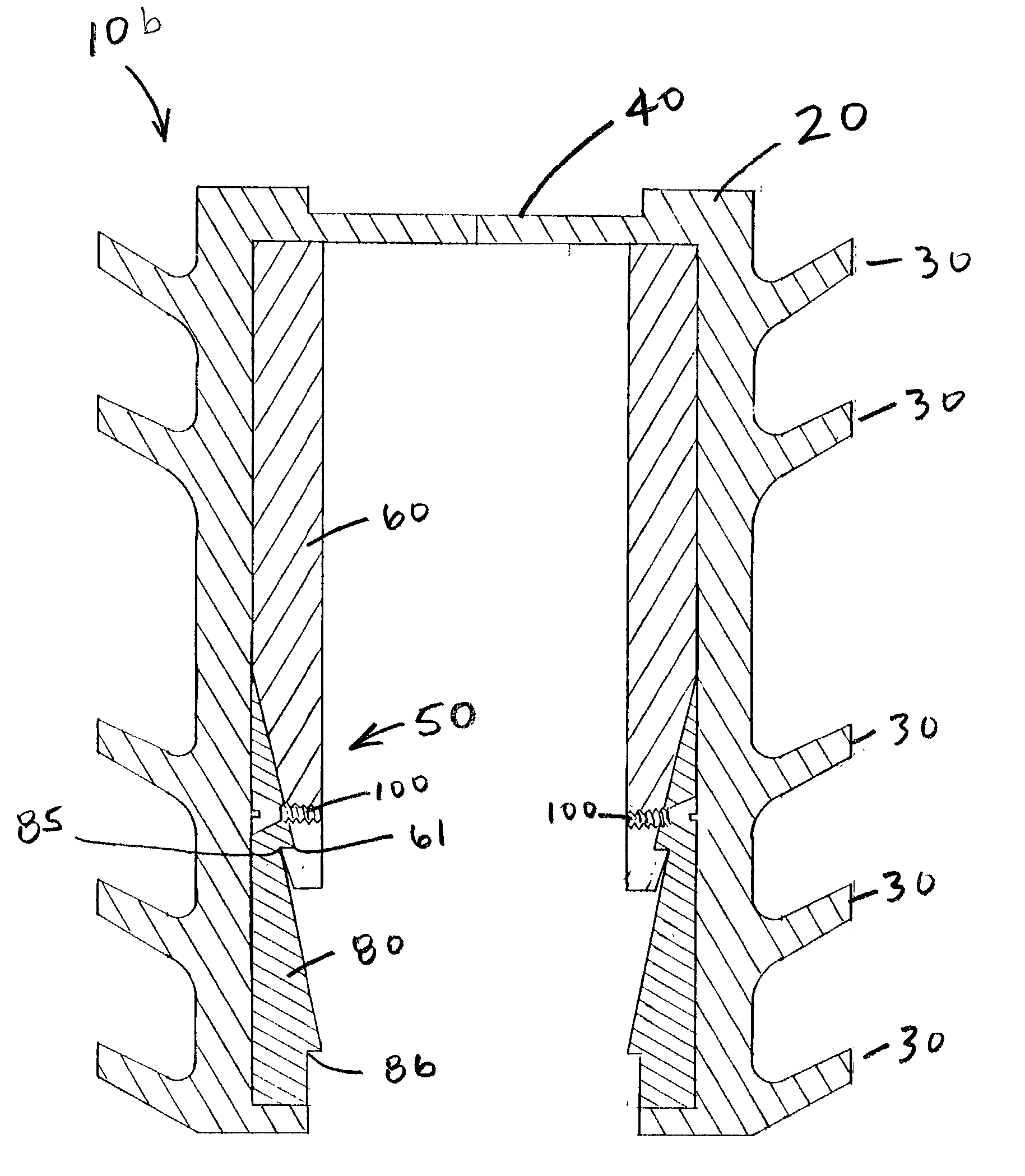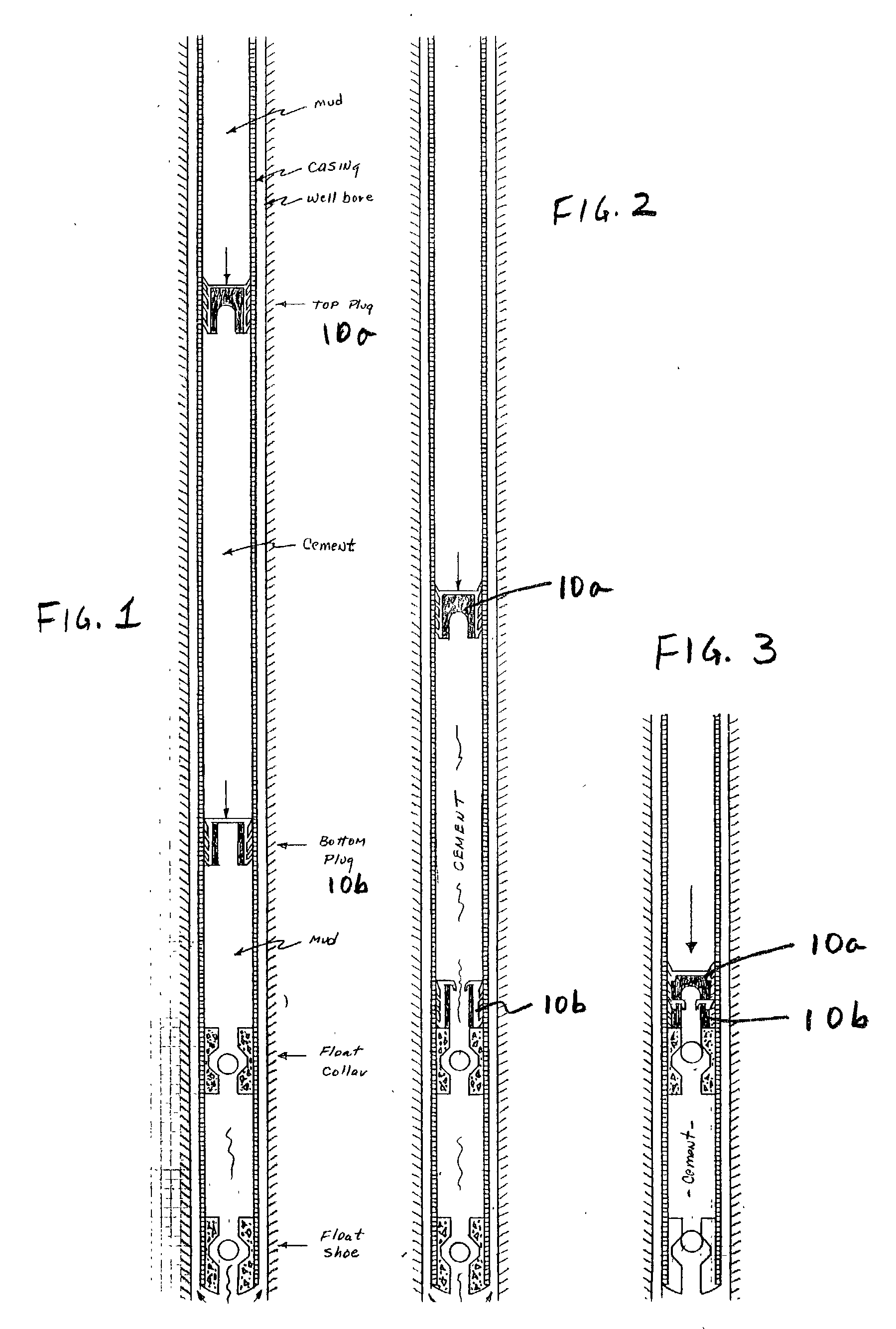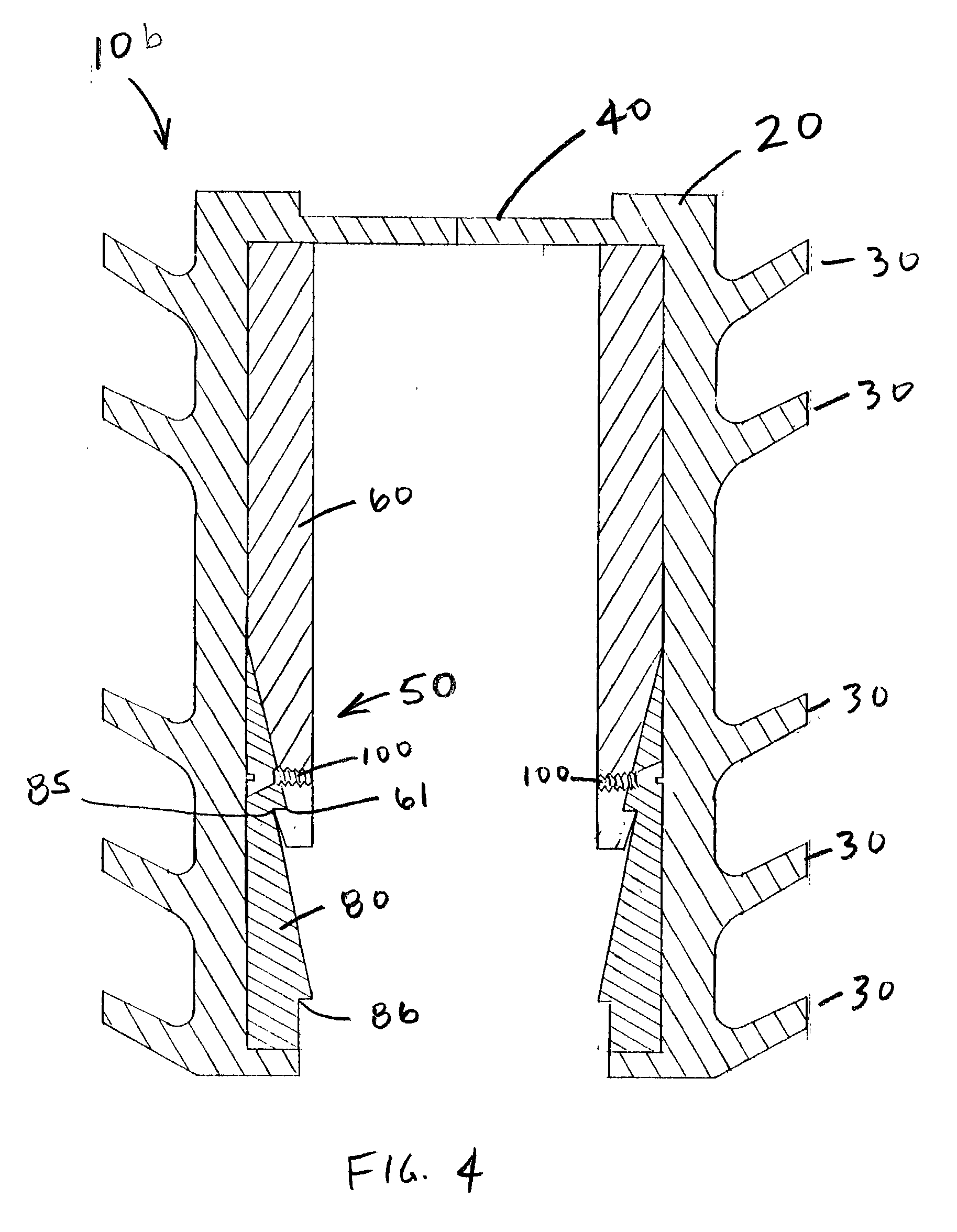Non-rotating cement wiper plugs
a technology of cement wiper plugs and wipers, which is applied in the direction of fluid removal, sealing/packing, borehole/well accessories, etc., can solve the problems of one or both wiper plugs, spin or rotate, and problems such as the wiper plugs
- Summary
- Abstract
- Description
- Claims
- Application Information
AI Technical Summary
Problems solved by technology
Method used
Image
Examples
Embodiment Construction
[0022] While the present invention may be made in a number of different embodiments, with reference to the drawings some of the presently preferred embodiments will be described. Those skilled in the relevant art will recognize that departures may be made from the described embodiments, while still falling within the scope of the present invention.
[0023] FIGS. 1-3 set forth a typical cement pumping sequence, with the cementing plugs of the present invention. In FIG. 1, a casing string is shown within an earthen borehole. A float shoe is at the bottom of the casing string, and a float collar is installed a short distance uphole in the casing string (typically one to three casing joints up). Both the float shoe and float collar have one-way or check valves therein, which permit fluid flow downwardly through them, but not in the opposite direction. In FIG. 1, a bottom cement wiper plug and a top cement wiper plug (at times referred to hereafter as simply "bottom plug" and "top plug") a...
PUM
 Login to View More
Login to View More Abstract
Description
Claims
Application Information
 Login to View More
Login to View More - R&D
- Intellectual Property
- Life Sciences
- Materials
- Tech Scout
- Unparalleled Data Quality
- Higher Quality Content
- 60% Fewer Hallucinations
Browse by: Latest US Patents, China's latest patents, Technical Efficacy Thesaurus, Application Domain, Technology Topic, Popular Technical Reports.
© 2025 PatSnap. All rights reserved.Legal|Privacy policy|Modern Slavery Act Transparency Statement|Sitemap|About US| Contact US: help@patsnap.com



